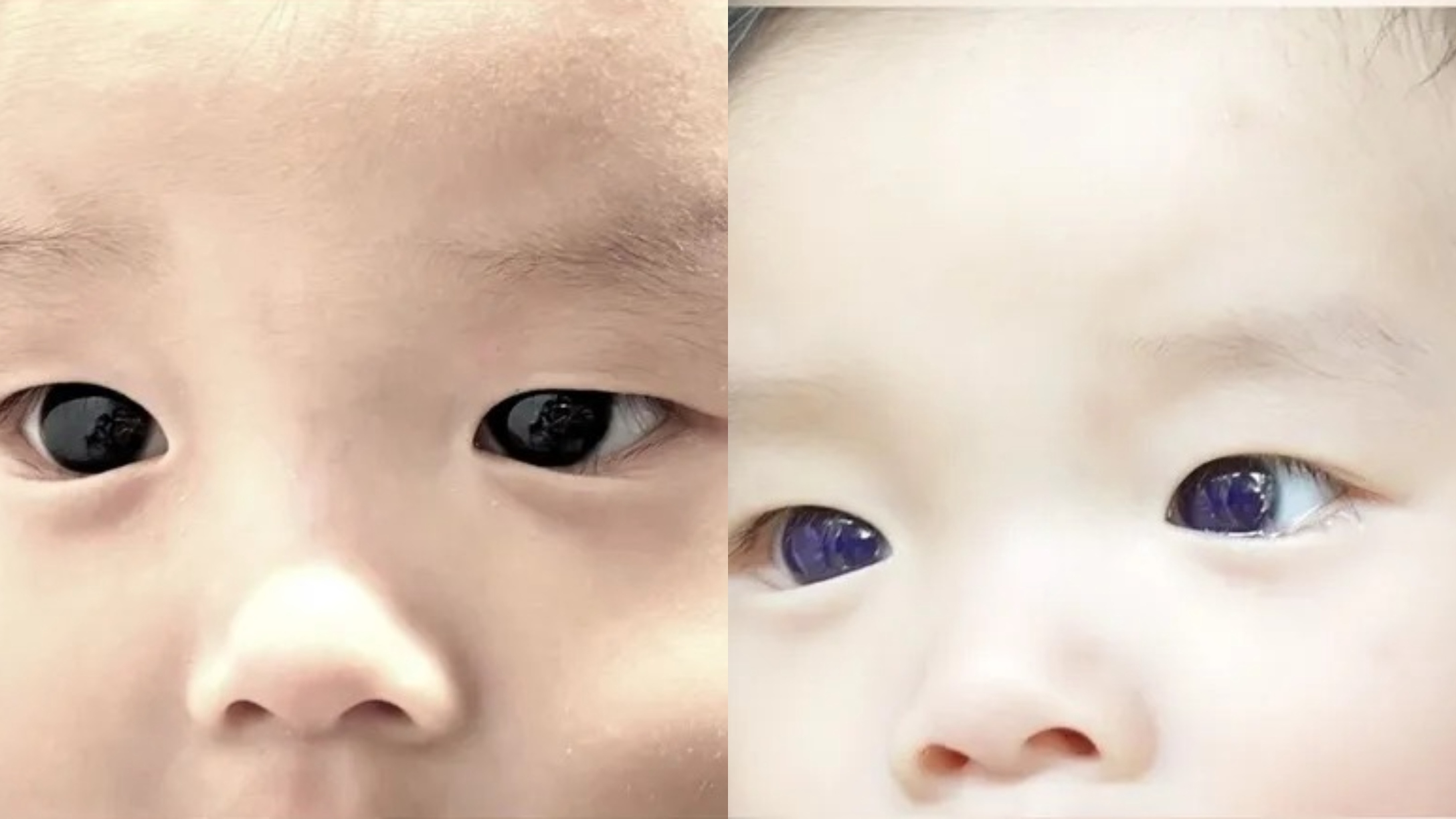
Treating a child with COVID-19 can be terrifying. While most children contract and clear the virus without any significant, long-term damage, wondering if your child will make it through alive and untraumatized is still nerve-wracking, even over three years after the start of the pandemic.
One mother in Thailand had to deal not only with the worries of her infant son’s response to the disease, but also to the treatment he was prescribed. The drug he was given changed his eye color.
More from CafeMom: The Delta Variant Is a Mom With Anxiety's Worst Nightmare
Doctors prescribed favipiravir for the 6-month-old's mild COVID symptoms.
This 6-month-old boy was diagnosed with COVID-19 after developing a cough and having a fever for a day, according to details of the case published in the medical journal Frontiers in Pediatrics. Doctors prescribed the antiviral medication favipiravir. The drug was approved by the Thai Ministry of Public Health in 2022 for children with mild to moderate symptoms.
More from CafeMom: Mom Still Wants To Take Trip to Disney World After 4-Year-Old Tests Positive for COVID-19
Less than two days later, his mother noticed his brown eyes had turned blue.
Eighteen hours after taking the medicine, the baby’s mother noticed that his dark brown eyes had turned bright blue. She called the doctors with her concerns. They instructed her to stop the treatment immediately. It would take another five days for the discoloration to fade, the New York Post reported. When doctors examined the child, they didn’t find any blue pigment deposit on the surface of his iris or on the anterior lens capsule.
Experts have theories about why this eye discoloration may happen.
Experts are not sure why favipiravir causes this discoloration, but they believe the fluorescence, or the emission of absorbed light, “may be due to the drug, its metabolites, or additional tablet components such as titanium dioxide and yellow ferric oxide.”
Earlier studies for favipiravir found that there was a “direct relationship” between the concentration of favipiravir and fluorescence intensity, especially in human hair and nails.
The more common side effects of the drug include raised levels of uric acid, diarrhea, and neutropenia, which is a lowered level of the white blood cell neutrophils. These reactions together represented 20% of the adverse effects of the drug, noted the medical journal.
This is not the only time this happened.
But there was another instance of corneal discoloration. In 2021, a man in India also reported that his brown eyes turned the same shade of blue as the infant boy’s. The 20-year-old man noticed the change on his second day of the favipiravir treatment. Doctors advised him to stop taking it and his natural eye color returned in a day.
As for the infant, doctors believe he didn’t suffer any damage to his vision and he recovered from his COVID symptoms. Researchers in the US have deemed favipiravir an effective treatment for COVID, but it has not yet been approved by the US Food and Drug Administration.




